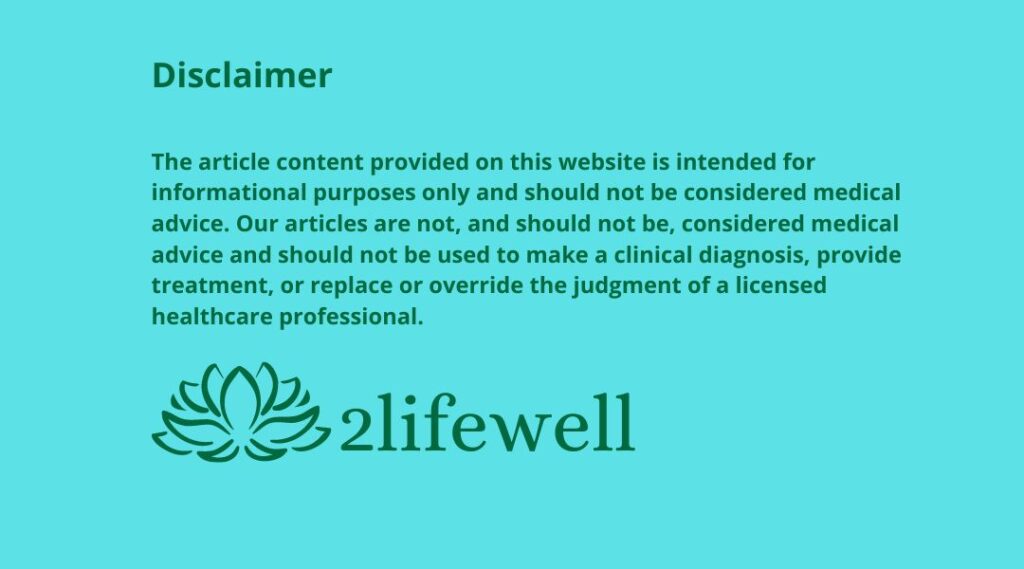
In the midst of our busy lives, finding moments of peace and clarity can seem like an elusive dream. Yet, within the practice of mindfulness lies the promise of cultivating presence and awareness amidst the chaos. In this comprehensive guide, we will explore the essence of mindfulness, its purpose, and practical ways to incorporate it into your daily routine, empowering you to navigate life with greater ease and serenity.
What is Mindfulness?
At its core, mindfulness is the practice of intentionally bringing attention to the present moment without judgment. Originating from ancient Buddhist traditions, mindfulness has evolved into a secular practice accessible to people of all backgrounds. It involves cultivating a state of awareness and acceptance, allowing us to observe our thoughts, feelings, and sensations with curiosity and kindness.
Tip: Begin your mindfulness journey by simply bringing awareness to your breath. Take a few moments throughout the day to pause and notice the sensation of breathing, allowing yourself to anchor in the present moment.
The Essence of Mindfulness
Mindfulness is not merely a technique but a way of being—a shift in perspective that opens the door to profound transformation. Central to mindfulness is the principle of non-judgment, wherein we observe our experiences without labeling them as good or bad. This non-reactive stance allows us to respond to life’s challenges with greater clarity and equanimity.
Tip: Practice self-compassion by acknowledging and accepting your thoughts and emotions without judgment. Treat yourself with the same kindness and understanding that you would offer to a close friend.
Benefits of Mindfulness
The benefits of mindfulness extend far beyond the realm of stress reduction, encompassing various aspects of physical, mental, and emotional well-being. Research has shown that regular mindfulness practice can lead to reduced stress, anxiety, and depression, as well as improved focus, memory, and cognitive function. Moreover, mindfulness has been linked to enhanced immune function, better sleep quality, and increased resilience in the face of adversity.
Tip: Start small and build consistency. Begin with short mindfulness practices, such as a five-minute breathing exercise, and gradually increase the duration as you become more comfortable with the practice.
Mindfulness Techniques

There are numerous techniques for practicing mindfulness, ranging from formal meditation practices to informal mindfulness exercises. Mindful breathing, body scan meditation, and loving-kindness meditation are just a few examples of practices that can cultivate present-moment awareness and inner peace. Experiment with different techniques to discover what resonates most with you, and remember that consistency is key to reaping the benefits of mindfulness.
Tip: Find a mindfulness technique that aligns with your preferences and lifestyle. Whether it’s a seated meditation practice or mindful walking in nature, choose an approach that feels natural and enjoyable for you.
Cultivating Mindful Awareness
Mindfulness is not confined to meditation cushions; it can be integrated into every aspect of daily life. Whether you’re eating, walking, or engaging in conversation, you can bring mindful awareness to the present moment by tuning into your senses and observing your experience without judgment. This practice of mindfulness in action fosters a deeper connection to life and a heightened appreciation for the beauty of each moment.
Tip: Create mindfulness triggers throughout your day to remind yourself to pause and bring awareness to the present moment. For example, every time you hear the ringing of a phone or feel the warmth of sunlight on your skin, take a moment to breathe and reconnect with the here and now.
Mindfulness in Relationships
One of the profound applications of mindfulness is in cultivating more meaningful and harmonious relationships. By practicing mindful listening and compassionate communication, we can deepen our understanding of others and nurture empathy and connection. Mindfulness also enables us to respond to conflicts with greater compassion and skill, fostering a more harmonious and supportive relational dynamic.
Tip: Practice active listening by giving your full attention to the speaker without interrupting or formulating a response in your mind. Allow the other person to express themselves fully before offering your perspective.
Overcoming Challenges in Mindfulness Practice
While the benefits of mindfulness are plentiful, establishing a consistent practice can be challenging. Common obstacles such as restlessness, self-criticism, and distractions may arise along the way. However, by approaching these challenges with mindfulness itself—by acknowledging them with kindness and curiosity—we can learn to navigate them more skillfully and deepen our practice in the process.
Tip: Approach your mindfulness practice with a sense of curiosity and experimentation, rather than striving for perfection. Embrace the ups and downs as natural parts of the journey and celebrate your progress along the way.
Mindfulness and Emotional Well-being
Emotions are an integral part of the human experience, and mindfulness offers a powerful tool for working with them skillfully. Rather than suppressing or reacting impulsively to emotions, mindfulness invites us to observe them with non-judgmental awareness, allowing them to arise and pass away naturally. This practice cultivates emotional resilience and equanimity, empowering us to navigate life’s ups and downs with greater grace and ease.
Tip: Develop a daily mindfulness check-in routine to connect with your emotions and inner experiences. Take a few moments to pause and ask yourself how you’re feeling, allowing whatever arises to be acknowledged and accepted without judgment.
Mindfulness in the Workplace
The benefits of mindfulness extend beyond personal well-being to the realm of professional life. In today’s fast-paced work environments, stress and burnout are common challenges faced by many. Mindfulness programs in the workplace have been shown to reduce stress, enhance focus and productivity, and improve overall job satisfaction. By incorporating mindfulness practices into the workday, employees can cultivate a more positive and resilient mindset, leading to greater success and fulfillment in their careers.
Tip: Integrate short mindfulness practices into your workday to promote focus and relaxation. Take brief mindful breaks between tasks, such as a few minutes of deep breathing or a short walk outside, to recharge and reset your mind.
Mindfulness and Stress Reduction
Stress is an inevitable part of life, but mindfulness offers a powerful antidote to its harmful effects. By bringing awareness to our thoughts, feelings, and bodily sensations in moments of stress, we can interrupt the automatic stress response and create space for a more skillful and balanced response. Through practices such as mindful breathing and progressive relaxation, we can activate the body’s natural relaxation response, promoting a sense of calm and well-being even in the midst of chaos.
Tip: Practice mindfulness during challenging moments by pausing and taking several deep breaths before responding. This simple act can help you regain perspective and respond to stressors with greater clarity and composure.
Mindfulness and Creativity
Creativity thrives in a mind that is open, curious, and present. Mindfulness cultivates these qualities by quieting the incessant chatter of the mind and allowing space for fresh insights and perspectives to emerge. Whether you’re an artist, writer, or entrepreneur, incorporating mindfulness into your creative process can unlock new levels of inspiration and innovation, leading to more authentic and meaningful expressions of your creativity.
Tip: Cultivate a beginner’s mind by approaching your creative endeavors with curiosity and openness. Let go of preconceived notions and allow yourself to explore new ideas and possibilities with a sense of wonder and experimentation.
Mindfulness for Self-Compassion
Self-compassion is an essential aspect of mindfulness practice, yet it’s often overlooked in our self-critical culture. Mindfulness invites us to treat ourselves with the same kindness and understanding that we would offer to a dear friend in times of struggle. Practices such as loving-kindness meditation and compassionate self-talk can foster a greater sense of self-acceptance and inner peace, empowering us to navigate life’s challenges with greater resilience and grace.
Tip: Practice self-compassion by cultivating a positive and nurturing inner dialogue. Replace self-critical thoughts with words of encouragement and support, acknowledging your worthiness and inherent goodness.
Mindfulness for Health and Healing
The mind-body connection is a central tenet of mindfulness, and emerging research suggests that mindfulness can play a significant role in promoting physical health and healing. From reducing inflammation and lowering blood pressure to alleviating chronic pain and boosting immune function, the benefits of mindfulness for physical health are increasingly recognized by the medical community. By integrating mindfulness into their wellness routines, individuals can support their overall health and well-being on a holistic level.
Tip: Practice mindful eating by bringing full awareness to the sensory experience of eating, such as the taste, texture, and aroma of your food. By savoring each bite and eating slowly and mindfully, you can cultivate a healthier relationship with food and enhance digestion.
Incorporating Mindfulness into Daily Life
The true essence of mindfulness lies not in formal meditation practice alone but in the integration of mindfulness into every moment of our lives. Whether you’re washing dishes, walking in nature, or spending time with loved ones, you can bring mindful awareness to your experience by simply being present and attentive. Start by setting aside dedicated time for formal meditation practice, then gradually expand mindfulness into all areas of your life, allowing it to infuse each moment with presence and meaning.
Tip: Create a daily mindfulness ritual, such as a morning meditation or an evening gratitude practice, to anchor yourself in the present moment and set a positive tone for the day ahead.
Current Scientific Research on the Benefits of Mindfulness
In recent years, an increasing number of scientific studies have explored the effects of mindfulness on various aspects of health and well-being. These studies provide compelling evidence for the profound impact of mindfulness on both the mind and body.
Recent research has shown that mindfulness meditation can lead to structural changes in the brain, including increased gray matter density in regions associated with attention, memory, and emotional regulation. These structural changes are believed to underlie the improvements observed in cognitive function, emotional resilience, and stress reduction among regular practitioners of mindfulness.
Furthermore, studies have found that mindfulness-based interventions can be effective in treating a wide range of mental health conditions, including anxiety disorders, depression, and post-traumatic stress disorder (PTSD). Mindfulness-based cognitive therapy (MBCT), for example, has been shown to be as effective as antidepressant medication in preventing relapse in individuals with recurrent depression.
In addition to its mental health benefits, mindfulness has been linked to improvements in physical health outcomes. Research suggests that mindfulness-based interventions can reduce inflammation, lower blood pressure, and improve immune function, thereby reducing the risk of chronic diseases such as cardiovascular disease and diabetes.
Moreover, mindfulness has been shown to enhance interpersonal relationships and social connectedness. Studies have found that mindfulness training can lead to improvements in empathy, compassion, and communication skills, fostering more harmonious and supportive relationships with others.
Overall, the growing body of scientific evidence supports the efficacy of mindfulness as a powerful tool for promoting holistic well-being. By integrating mindfulness into our lives, we can cultivate greater resilience, compassion, and joy, enriching not only our own lives but also the lives of those around us.
Mindfulness offers a profound path to presence and awareness in an increasingly distracted and fragmented world. By embracing mindfulness as a way of being rather than a mere practice, we can cultivate greater peace, clarity, and compassion in our lives, enriching our own well-being and the well-being of those around us. As you embark on your own mindfulness journey, may you find solace in the simplicity of each breath and the beauty of each moment, knowing that the power to transform your life lies within you.
Tip: Stay informed about the latest research findings on mindfulness by following reputable scientific journals and organizations dedicated to mindfulness research, such as the Mindfulness Research Monthly and the Center for Mindfulness Research and Practice. Incorporate evidence-based practices into your mindfulness routine to maximize the benefits and deepen your understanding of this transformative practice.
Livros:
- “Wherever You Go, There You Are: Mindfulness Meditation in Everyday Life” – Jon Kabat-Zinn –https://amzn.to/4en7bMo
- Kabat-Zinn offers an accessible introduction to the practice of mindfulness, showing how cultivating mindfulness can transform the way we live our daily lives.
- “The Miracle of Mindfulness: An Introduction to the Practice of Meditation” – Thich Nhat Hanh – https://amzn.to/4d73klv
- Nhat Hanh introduces mindfulness as an accessible and transformative meditation practice, showing how being present in the moment can promote well-being and fulfillment.
- “Mindfulness in Plain English” – Bhante Henepola Gunaratana- https://amzn.to/47p0tmB
- Gunaratana offers a detailed explanation of the practice of mindfulness, highlighting its benefits for mental, emotional and spiritual health, and how to cultivate this skill in everyday life.
- “Full Catastrophe Living: Using the Wisdom of Your Body and Mind to Face Stress, Pain, and Illness” – Jon Kabat-Zinn – https://amzn.to/3XkRRZP
- Kabat-Zinn presents a comprehensive mindfulness-based program for dealing with stress, pain, and illness, showing how practicing mindfulness can promote fulfillment even in difficult times.
- “The Mindful Way Through Depression: Freeing Yourself from Chronic Unhappiness” – Mark Williams, John Teasdale, Zindel Segal, and Jon Kabat-Zinn – https://amzn.to/4eocxHk
- This book offers a mindfulness-based approach to dealing with depression, showing how cultivating mindfulness can promote healing and emotional fulfillment.
Scientific articles:
- “Mindfulness: A Proposed Operational Definition” – Bishop et al. (2004)
- This article proposes an operational definition of mindfulness based on a comprehensive review of the literature, highlighting its key components and their applications for promoting well-being.
- “What Does Mindfulness Meditation Do? And How Can It Be Measured?” – Brown and Ryan (2003)
- This review examines research on the effects of mindfulness meditation, highlighting its impacts on mental health, cognitive functioning, and emotional well-being.
- “Mindfulness Training as a Clinical Intervention: A Conceptual and Empirical Review” – Baer (2003)
- This article reviews the empirical evidence on the effectiveness of mindfulness as a clinical intervention for a variety of mental health problems, highlighting its benefits for fulfillment and well-being.
- “The Psychological and Neurological Mechanisms of Mindfulness” – Tang et al. (2015)
- This review explores the psychological and neurological mechanisms underlying the practice of mindfulness, highlighting how it can promote emotional regulation, self-compassion, and fulfillment.
- “Mindfulness-Based Interventions: A Meta-Analysis of Longitudinal Outcome Studies” – Khoury et al. (2013)
- This meta-analysis examines results from longitudinal studies on mindfulness-based interventions, highlighting their positive effects on reducing stress, improving mental health, and increasing fulfillment.
Book Chapters:
- “The Handbook of Mindfulness: Theory, Research, and Practice” – Introductory chapter on the foundations of mindfulness by Kirk Warren Brown et al. (2015) – https://amzn.to/3Xnkeq3
- Offers a comprehensive overview of the basic principles of mindfulness, including its definition, its origins, and its practical applications to promote fulfillment and well-being.
- “Oxford Handbook of Happiness” – Chapter on mindfulness and happiness by Ivtzan and Lomas (2014)- https://amzn.to/3AZkiEV
- Explores how the practice of mindfulness can promote happiness and fulfillment, highlighting its relationships with gratitude, compassion, and contentment.
Improve your searches in:
- Hölzel, B. K., Carmody, J., Vangel, M., Congleton, C., Yerramsetti, S. M., Gard, T., & Lazar, S. W. (2011). Mindfulness practice leads to increases in regional brain gray matter density. Psychiatry Research: Neuroimaging, 191(1), 36-43.
- Kuyken, W., Hayes, R., Barrett, B., Byng, R., Dalgleish, T., Kessler, D., … & Byford, S. (2015). Effectiveness and cost-effectiveness of mindfulness-based cognitive therapy compared with maintenance antidepressant treatment in the prevention of depressive relapse or recurrence (PREVENT): a randomised controlled trial. The Lancet, 386(9988), 63-73.
- Pascoe, M. C., Thompson, D. R., & Jenkins, Z. M. (2017). Mindfulness mediates the physiological markers of stress: Systematic review and meta-analysis. Journal of Psychiatric Research, 95, 156-178.
- Carson, J. W., Carson, K. M., Gil, K. M., & Baucom, D. H. (2004). Mindfulness-based relationship enhancement. Behavior Therapy, 35(3), 471-494.

